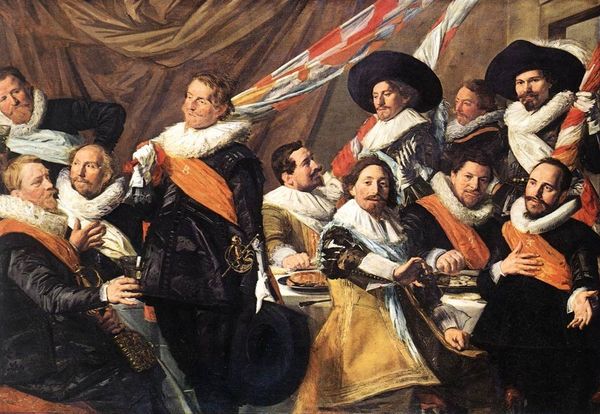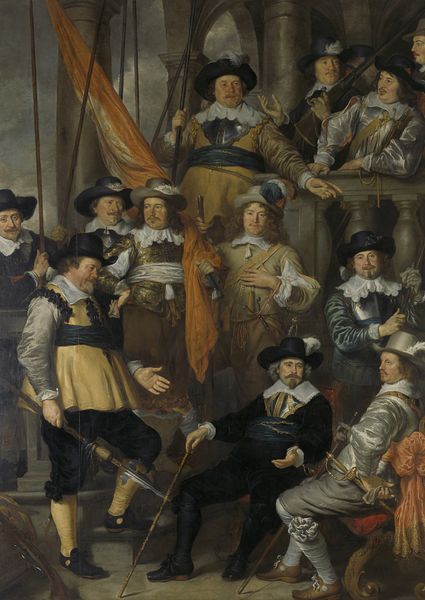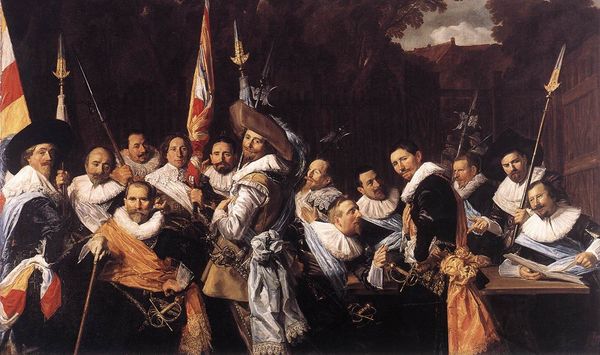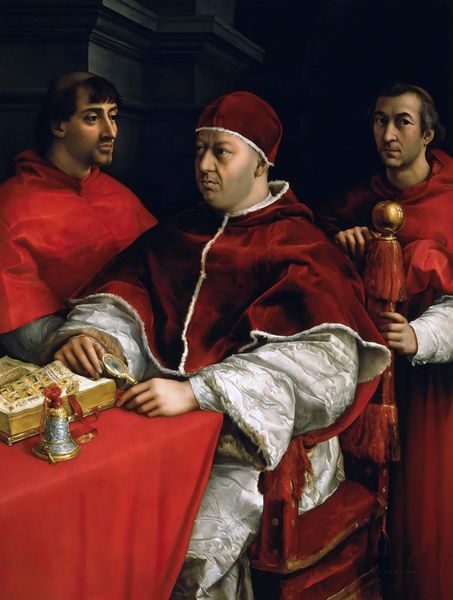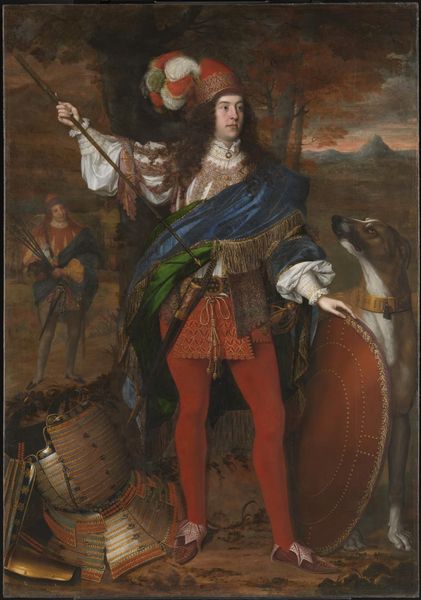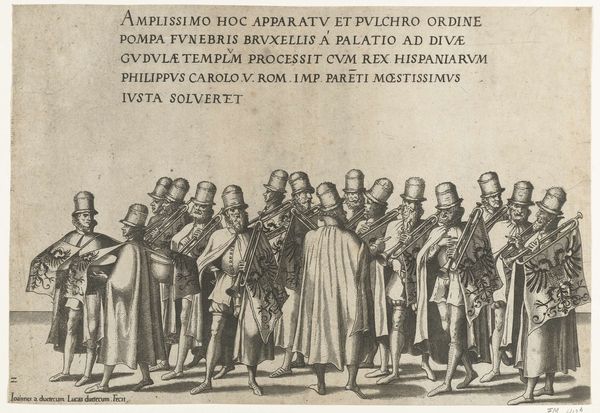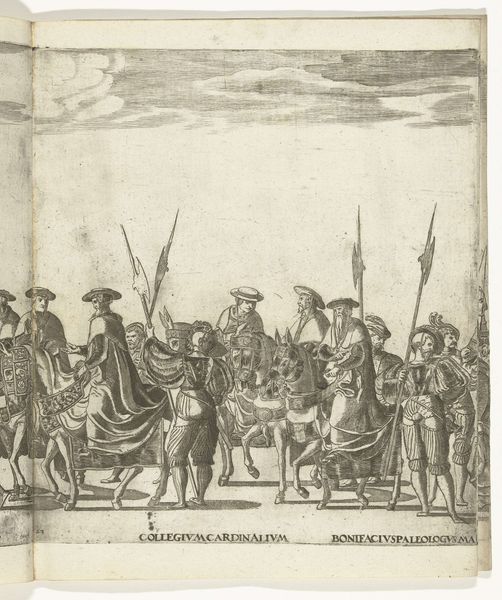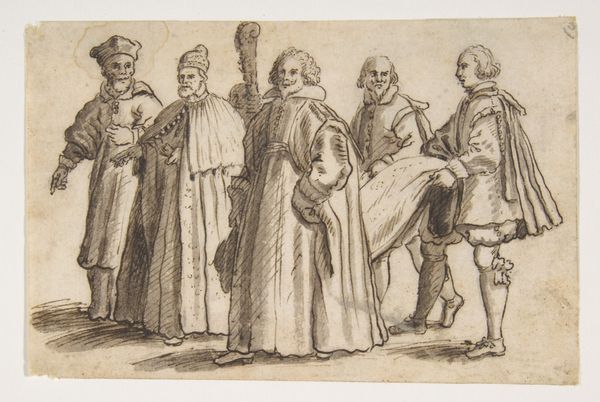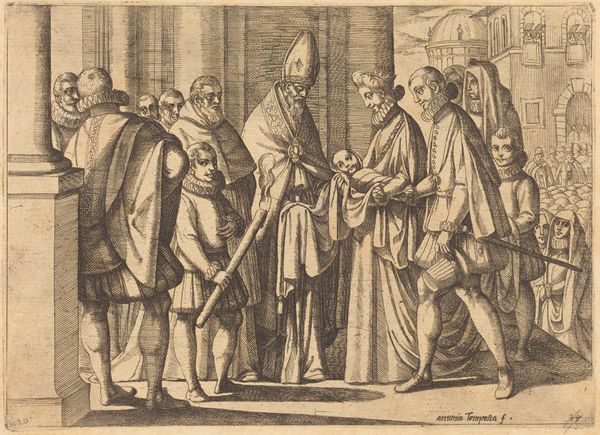
The company of Captain Reinier Reael and Lieutenant Cornelis Michielsz. Blaeuw, known as the ‘Meagre Company’ (detail) 1637
0:00
0:00
painting, oil-paint
#
portrait
#
baroque
#
dutch-golden-age
#
painting
#
oil-paint
#
group-portraits
#
genre-painting
Copyright: Public domain
Curator: What strikes me first is the overall impression—a sort of muted swagger emanating from this group. There's an interesting spatial arrangement—it’s as if they vie for space within the frame. Editor: You're right, there is a potent presence. The work we're discussing is a detail of Frans Hals' monumental painting from 1637, known as "The company of Captain Reinier Reael and Lieutenant Cornelis Michielsz. Blaeuw," or more popularly, "The Meagre Company." Curator: Meagre is a strange choice for such formidable figures, even just focusing on the cropped section we are observing. Editor: Ironically, it was more a comment on the limited funding these civic guard companies were receiving at the time, reflected metaphorically. This is more than just a gathering; it encapsulates a historical moment. Their white ruffs and serious expressions indicate a company grappling with the demands of defending its city and upholding traditions in the 17th century Dutch Republic. It speaks of a civic responsibility taken seriously. Curator: Observe how the light dramatically enhances their facial expressions; it seems carefully distributed, with layers upon layers—light on the forehead, shadowed eyes, highlighted cheekbones—each revealing individual character. These aren't generic portraits; they’re records of unique personalities and civic unity. Editor: Absolutely. Beyond the artistry, one might also read deeper cultural symbols into each element. Consider their weapons, the flags—the whole staging screams not just protection but civic pride. This pride intersects directly with Protestant beliefs where everyone must be directly responsible to God through a social structure upheld together. Curator: Precisely. The fact that each member holds an object symbolic to the company speaks volumes; the halberds are not mere weapons—they signify authority and protection offered collectively to their home city and faith values. Editor: Looking closely allows us to delve beyond appearances and into a network of historical associations, painting the narrative of 17th century civic society with symbolic significance and emotional charge. The light and dark contrasting areas make their presence felt beyond any sense of historical record keeping. Curator: Ultimately, it’s about legacy—how symbols echo our human needs through history and resonate even today in art. Editor: Indeed. It highlights that we are never alone with artworks like this. Every detail prompts further understanding of not only the artist's technique, but of cultural memory as well.
Comments
No comments
Be the first to comment and join the conversation on the ultimate creative platform.
